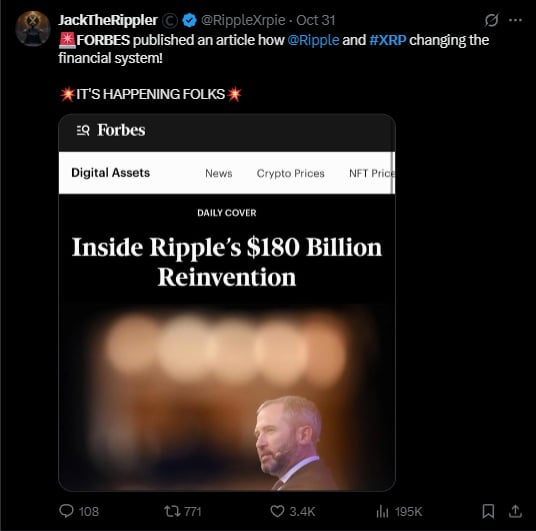Bitwise and Grayscale’s Spot Solana ETFs Garner $200 Million in Early Flows
TLDR
- Bitwise’s BSOL ETF saw $420 million in inflows, surpassing all other crypto ETFs.
- Grayscale’s GSOL ETF raised $2 million in its first week, reaching $100 million in assets.
- Solana ETFs continue to grow, with $200 million in inflows in just a week of trading.
- Spot Bitcoin and Ethereum ETFs also saw record inflows and high trading volumes in October.
The recent launch of two U.S.-based spot Solana ETFs has garnered impressive attention, attracting over $200 million in inflows in just their first week of trading. These funds, Bitwise’s BSOL and Grayscale’s GSOL, have quickly established themselves as strong contenders in the cryptocurrency exchange-traded product space. Despite launching within days of each other, the two funds experienced notable differences in their reception.
Bitwise’s BSOL Leads with Record Inflows
Bitwise’s BSOL saw remarkable success in its debut week, drawing nearly $70 million on its first day of trading alone. The momentum continued throughout the week, and by the end of the trading period, the fund had accumulated almost $420 million, including seed capital.
According to data from SoSoValue, BSOL’s cumulative inflows of around $197 million from public investors placed it at the top of all crypto ETFs for the week, far surpassing the inflows into other digital asset funds. Bloomberg Senior ETF Analyst Eric Balchunas noted, “It led all crypto ETPs by a country mile in weekly flows with +$417m.”
The high demand for BSOL indicates strong investor interest in Solana exposure through traditional financial vehicles. Bitwise’s fund is designed to provide investors access to Solana while staking the asset for additional rewards, a feature that may have contributed to its early success.
Grayscale’s GSOL Draws Lower Inflows
In contrast to BSOL, Grayscale’s GSOL received a much smaller reception. Launched a day after BSOL, GSOL garnered approximately $2 million in net inflows during its first week, a fraction of its competitor’s totals. Despite the lower inflows, the fund’s assets grew significantly when including its seed capital, bringing GSOL’s total to over $100 million in assets. This slower uptake is attributed to its later launch, which may have given BSOL an early mover advantage.
Grayscale’s GSOL charges a slightly higher management fee of 0.35%, compared to BSOL’s 0.2%. However, both funds share a common feature in their investment strategy: staking the Solana tokens to earn additional returns. Grayscale has indicated that 77% of staking rewards will be passed on to GSOL investors, which could enhance the fund’s appeal over time.
A Surge in Spot Crypto ETFs
Both BSOL and GSOL enter a market already dominated by spot Bitcoin and Ethereum ETFs, which saw positive inflows in October. Bitcoin-based funds led the way, with $3.61 billion in net inflows, a slight increase from the previous month. October also saw a surge in trading volume, with spot Bitcoin ETFs recording their highest-ever trading volume, surpassing $133 billion, a marked rise from September’s $72.91 billion.
Ethereum-based ETFs also saw positive movement, with $668.13 million in net inflows. These funds now collectively hold around $25 billion in assets, representing more than 5% of all Ethereum in circulation. Despite not breaking records, Ethereum funds showed strong resilience in the face of increasing competition from other digital assets, including Solana.
Solana’s Growing Role in Crypto ETFs
The rapid success of BSOL and GSOL underscores the growing importance of Solana in the broader cryptocurrency ecosystem. While Bitcoin and Ethereum continue to dominate the space, Solana has emerged as a popular alternative due to its faster transaction speeds and lower fees. As Solana ETFs gain traction, more investors are likely to seek exposure to this blockchain technology, expanding the market for crypto-related exchange-traded funds.
With the rapid growth of crypto ETFs, the investment landscape continues to evolve. Funds like BSOL and GSOL are helping to bridge the gap between traditional investment vehicles and the burgeoning cryptocurrency market. As Solana’s presence in these ETFs increases, it could signal the beginning of a broader trend toward more diverse crypto asset exposure.
The post Bitwise and Grayscale’s Spot Solana ETFs Garner $200 Million in Early Flows appeared first on CoinCentral.
You May Also Like

XRP Price Prediction: As Price Dips, Is XRP Still The Best Crypto to Buy Now?
